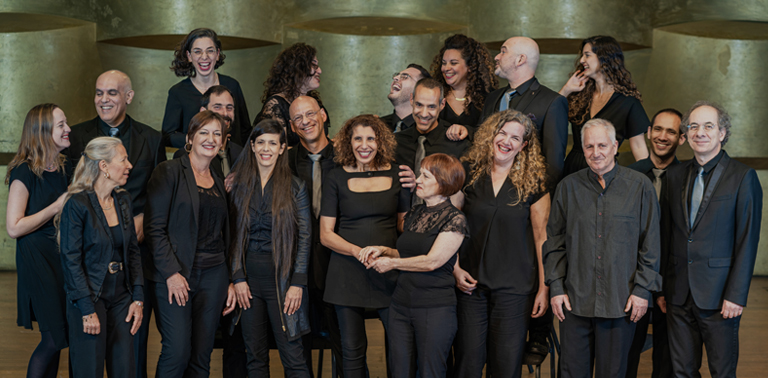

Noam Sheriff: Missa Terra Sancta
The Israeli Vocal Ensemble
Soprano Tom Ben Ishai
Conductor Yuval Benozer
Noam Sheriff: Missa Terra Sancta World premiere.
A Mass for the Holy Land, the last work by composer Noam Sheriff, winner of the Israel Prize, was written especially for the Israeli Vocal Ensemble. The work is bilingual-sung in Latin and Hebrew, as well as bi-religious, Christian and Jewish, and was inspired by the composer’s visit to the Solesmes Abbey in France, the center of Gregorian chant culture. This visit reinforced in Sheriff the understanding that Gregorian music, based in part on pentatonic scales, is remarkably similar to the Biblical Hebrew Cantillation accents. These connections and others are expressed in the unique work.
Piece duration: 30:15 minutes.
Live recorded at Tel Aviv Museum of Art in 24.5.18.
The Mass has 6 movements:
Kyrie
Gloria
Credo
Sanctus
Agnus Dei
Dona Nobis Pacem
Duration: 30:15 min
In my perception, it seems that if we just replace the Latin words of the Gregorian chant with Hebrew words and the result will sound completely natural. As for the text—the connection between languages is a subject in which I was always interested and I often use it.
The Mass, taken from the Christian prayer, is actually a Mass. For each of the chapters from the Christian Mass there is a Jewish equivalent. The origin of the word Kyrie which opens the Mass, is the Hebrew words Kirya Ne’emana. This also explains the connection to the next chapter Credo in which the individual declares his faith. The Sanctus chapter is taken directly from the verse in the book of Isaiah “Holy, holy, Lord of hosts”. The word Alleluya is sung in almost every Christian prayer without knowing that its origin is of course “Hallelu-jah” (which means in Hebrew, praise the God).
From the Composer:
“Missa Terra Sancta represents the religious belief whatever it is, in its basic and fundamental conception in which the believer casts an anchor in the stormy sea of life to find a haven. It is based on the common origins from which these texts derive. Like in many of my previous works, among which are wide-ranging ones such as the Resurrection of the Dead, the Sephardic Passion or the Psalms of Jerusalem – which are based on the various Jewish liturgy, I would like to express the deepest and most ancient foundation of the universal faith also in Missa Terra Sancta.
Anyone who listens to Gregorian chant cannot help but hear the clear musical connection to ancient Jewish piyyut and Biblical Hebrew Cantillation accents – in the pentatonic background and in the free rhythm.
![[:he]mail-mobile-ixon[:]](https://ivocal.co.il/wp-content/uploads/mail-mobile-ixon.png)

![[:he]mail-ixon[:]](https://ivocal.co.il/wp-content/uploads/mail-ixon.png)